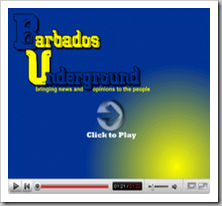Comment posted by Bush Tea
We are good so far ROK. In fact you are way ahead of me, for the purpose of our exercise I am willing to accept only that some more intelligent (than us) force is responsible for the design and order that we experience daily. (Forget the bible – we will get to that)
My inclination is to call that force BBE (Big Boss Engineers) based on the intricate and complex designs.
Now here is the question…
Why would an intelligent BBE create the reality that we experience all around us with it’s great beauty but also great suffering and sorrows?
What is the OVERALL objective?
…and if the answer is more than one paragraph, I won’t buy it….



















Serious inquirers and would be Bible students would do well to download and save the notes below on types and the typological method of study for thier Bible study and enjoyment.
types
To properly understand the Old Testament (or the Bible as a whole) and discover its promises, it is necessary to understand and discuss the basic facts about the covenants of God, and a little about the dispensations, and also about types.
In addition one must have a firm grasp of the fundamental principles used to interpret prophecy, since at least 25% of the Old Testament is presented in the 16 prophetic books.
First it is noteworthy that the word type does not occur in the Bible.
A Bible type is a divinely purposed illustration of some Old Testament scriptural truth that is used to picture or illustrate a New Testament truth in addition to its literal meaning.
The picture used may be an Old Testament :
1] person, as Adam, Solomon, Jonah, Aaron, Moses (Matthew 12:42, 12:40, Hebrews. 3:5-6, 7-11),
2] event, as the crossing of the Red Sea (I Corinthians 10:11), lifting up the brazen serpent
(Numbers 21; John 3:14),
3] thing, or object as the veil of the temple (Hebrews 10:19-20),
4] institution, as the tabernacle, priesthood and the offerings (Hebrews. 9:11-12),
5] ceremony, as the passover (I Corinthians 5:7),
6] historical event, as the offering of Isaac ( Genesis 22),
7] ritual, as the act of circumcision (Genesis 17),
8] place, as Canaan.
A type is something like a symbol with some very important differences. Whereas a symbol usually refers to something either past, present or future, a type is a special sort of prophecy that always refers only to something in the future.
A type is rather like a picture in the Old Testament that is intended to tell us about something which will happen in the New Testament. It is like a shadow of something not yet seen.
The object or event or person used in the Old Testament as a picture of what is to come is called the “type,” and the object or event or person in the New Testament that is being foretold is called the ” antitype.” There must be some easily identified similarity between the type and the antitype.
Many feel that the Old Testament type (be it person, event or object) was actually appointed by God to have the particular similarity to the antitype.
Types occur most frequently in the Pentateuch, but are found more sparingly elsewhere. The antitype, or fulfillment of the type, is found generally in the New Testament.
For example, in Genesis 2:23, the woman is a type of the Church, the bride of Christ (Ephesians. 5:25-321,2 Corinthians. 11:2-3; cp. John. 3:28-29; Revelation 19:7-8).
A type always bears an unmistakable likeness to the truth which it illustrates. Just as an inventor makes a working model of the machine he has invented as a more definite and accurate depiction of any word description, so does a type picture its antitype.
Whereas the type is merely a picture, symbol or example of the real thing, the antitype is the real thing which the type or picture pointed to or prefigured. e.g.
Aaron the High Priest in Tabernacle days is a type of Christ our High Priest as is taught in Hebrews 7. Christ is the fulfillment (or antitype of Aaron’s picture). All the tabernacle furnishings are a type of the Person or work of the Lord Jesus Christ or of great truths connected with Him.
A type is an incident or occurrence that is historically true, but points to another person, incident
or occurrence in the future ( the antitype). The type is a shadow of something to come. Often we
cannot identify the object that casts the shadow by the shadow alone, but when the object to whom the figure or shadow points all becomes clear
For example, we know that Adam is a type of Christ when he was put to sleep (often used in the Bible as a picture for death) and from his wounded side the Lord God fashioned from him a woman to be an helpmeet for him. Without the
record of the New Testament we could never have known the meaning of that first surgical operation performed in the Garden of Eden, and that it speaks of Christ dying to procure His bride, the Church.
Note that in Scripture (as in other literature) words may convey a truth or idea and yet not express a literal fact. For example, when Christ said “I am the door”, he expressed a fundamental truth but not a fact-,” for Christ was not a door. However, the use of the word “door” does express the essential truth that He was “the means” of entry to the Father. In other words, a type is a mode of expressing an idea by the use of words that suggests pictures or images of the idea.
A good example of a type is the incident recorded in Numbers when the children of Israel had been bitten by poisonous snakes and were instructed to look at a bronze serpent on a pole. God had promised that those who did so would be healed. The entire experience is a type. It was an actual, historical event that portrayed a New Testament truth.
Here is what Jesus said about this incident in John 3:14-16: “And, as Moses lifted up the serpent in the wilderness, even so must the Son of man be lifted up; That whosoever believeth in Him should not perish, but have eternal life. For God so loved the world, that He gave His only begotten Son, that whosoever believeth in Him should not perish, but have everlasting life.”
At first it might seem strange that of all things, a serpent should be a type of Christ and His saving work on the cross. But it makes sense when we read what Paul wrote in his second letter to the Corinthians, which reads “Now, then, we are ambassadors for Christ, as though God did beseech you by us; we beg you in Christ’s stead, be ye reconciled to God. For He hath made Him, who knew no sin, to be sin for us, that we might be made the righteousness of God in Him” (2 Corinthians. 5:20-21).
We identify a serpent with sin, and brass or bronze in the Bible speaks of some aspect of God’s judgment. The bronze serpent, therefore, was a fitting portrayal of the Lord Jesus being made sin for us (bearing God’s wrath to pay the price for our iniquity). He made it possible for us to be saved by simple looking to Him in faith. That Old Testament incident was therefore an outstanding type of the redemptive work of Christ.
Jonah’s experience in the belly of the fish was also a type. Jesus said: “For as Jonah was three days and three nights in the belly of the great fish, so shall the Son of man be three days and three nights in the heart of the earth”-Matthew 12.40.
Hebrews, Chapter 9, makes reference to the tabernacle, its furnishings, and its sacrifices-replete with types. The sacrificed animals portrayed Christ as He gave His life for us. The furnishings of the tabernacle and, temple, along with their related rituals, prefigured the Lord Jesus and His redemptive work. And the veil in the tabernacle and temple separating the holy place from the Holy of Holies was a type of the physical body of Christ. At the very moment, Jesus died “the veil of the temple was torn in two from the top to the bottom” (Matthew 27:51). Through the Savior’s death in the flesh, a new and living way has been opened into the very presence of God for all who believe in Christ (see Hebrews 10:19, 20).
When interpreting types we must be sure to have a Bible warrant for the supposed type. Nothing may be insisted upon as a type without explicit New Testament authority. Only things or persons etc. recorded in the Old Testament which are used in the New Testament in a typical or spiritual sense can be used without question”.
All “types” not so authenticated must be recognized as having only the authority of analogy or spiritual congruity. The Old Testament is very difficult to comprehend without the New Testament explanation and vice versa.
The “shadow” of the Old Testament demands the substance of the New Testament (Hebrews 10:1). There cannot be one without the other. We use types in the Old Testament as examples to illustrate New Testament truth.
When interpreting types we must be on guard against the fanciful and overstrained, and be careful not to minimize the historical facts or miss the primary meaning of Old Testament passages. We must not let our imagination run away with us, as the church has suffered enough already from the over spiritualization of the Word of God.
We must be careful also not to build doctrines upon types that are not confirmed by the rest of Scripture, and we must bear in mind that no doctrine can be built upon a type.
Types, may and do illustrate doctrinal truth beautifully, but they must be kept in their God appointed place to illustrate doctrine only. We should never base a doctrine solely on a type.
The information given by the type may be part of the overall information used to form the doctrine, but there must be more than just the type on which to base the doctrine. If the type is clearly explained in the New Testament, then, of course, the explanation may be depended upon and used with more confidence in the forming of doctrine.
Often the types had symbolic meaning to the people of the Old Testament themselves. Their understanding of the symbol often gives some clue as to the New Testament meaning of the type.
What was the moral or spiritual truth that came to the mind of the Old Testament person when he thought of the person or event or object that is later (in the New Testament) identified as a type? The point of similarity that the type is trying to foreshadow will not be contrary to its symbolism.
Usually types have only one major teaching. There may be some secondary teachings as well, but there is one main lesson to be learned in each type.
When studying a type, it is easy to look back from our point in time and fill the Old Testament type with meaning that it did not have. Although the antitype will always be clearer than the type, we should not start with the antitype and go back to the type, inserting meanings the type did not have.
If a type is a “shadow” of something to come, it is not right to look back at the shadow, once the real object is seen, and imagine that you can see all the detail of the real object in the shadow.
We must always realize also that the antitype is always a much higher form of truth than the type. The sacrificial lamb was the type of Christ. But there is really no comparison between a lamb and Christ. Even though the lamb was a shadow of His obedient death, Christ is much higher than the lamb. The types were earthly pictures that were foretelling heavenly, spiritual, wonderful, much higher truths yet to come.
Types must be differentiated from illustrations. Although generous use of the Old Testament ought to be made in making application and in illustrating Scriptural truths, care and caution must at all times be exercised. The Old Testament tabernacle is clearly stated to be a type in Hebrews 8:5.
A student with a fertile imagination however, may easily find many things in the tabernacle that he might want to include in the typology of the tabernacle, whereas there may be only one main teaching to be gleaned from the typology of the tabernacle. The main teaching probably relates to the fact that the people of God were separated from the presence of God until Christ “tore the veil” and opened up the way to the Holy of Holies.
This does not mean we are to ignore other interesting parallels that we see in the tabernacle, but we ought to call these other parallels “illustrations,” rather than call them “types.”
Since a type is a God-appointed similarity through which He wants to teach a specific truth, these other similarities that we see may not be part of God’s intended type; although they may still be used as illustrations of truths taught elsewhere.
For instance, you will find that the boards that make up the walls of the tabernacle were held together by a silver rod that went through the boards but was invisible from the outside. Let us not call that a type, but when teaching about the fact that it is the Holy Spirit who indwells each believer and who binds all believers into the “building” of God (Ephesians 2:21), we can certainly use the rods and boards of the tabernacle as an illustration.
There are some who would feel that the similarity is so striking that it must be a type. It seems to me that we can refrain from calling it a type and still use it as an illustration.
When interpreting types once we look up all Scripture references that apply, and study the meaning of the name of persons and places mentioned, we will be able to identify types correctly and thus greatly enrich our understanding of the Word and our spiritual life.
GP
One question you left out is why “Promises” and what is conditional upon those promises?
BTW, to you know-it-all bible experts, not GP, he is a good solid bible scholar, that;
The Garden of Eden was in Iraq, biblical Babylon?
That Mesopotamia, which is now Iraq was the cradle of civilization?
Or you going to twist that fact too!
Read the Holy Quraan to gain better understanding of purpose of mankind’s existence.
everything is a vibration.. right from th smallest thing that we assume there exists, to the mightiest things that these smallest things make. every force is a wave and every material is a particle.there are only 5 pure entities in the universe or beyond. earth[any particles in universe], fire[any thing to do with temperature in universe], water[anything to do with fluids in universe], air[anything to do with waves in universe] and finally space, which is nothing but the universe itself. we are jus a combination created by the constant existence of the vibrations in the 5 basic entities and their interactions. Humans for example, are made of flesh and bones[earth], inhale air[air], have in their body,blood and other liquids containing water[water], have a temperature for existence, extremes of which can lead to death[fire], and the one thing that’s left is life itself, which is nothin but the universe. The vibrations have different frequency and that’s why things are different and there are lots of combinations of different frequencies leading to the variety of things that exist. We come into the earth as a combination product of this several hetero frequency entity cluster and we go back, like a to and fro motion. when we die, we give out air to atmosphere, the temperature is gone hence the body becomes cold, our body goes to the earth, the liquidity of body liquids is lost due to loss of water, and our life goes back to space/universe. Ponder over this,,
Pingback: What Is Hca In Garcinia Cambogia » Blog Archive » Health Care Side Effects Of Hydroxycut